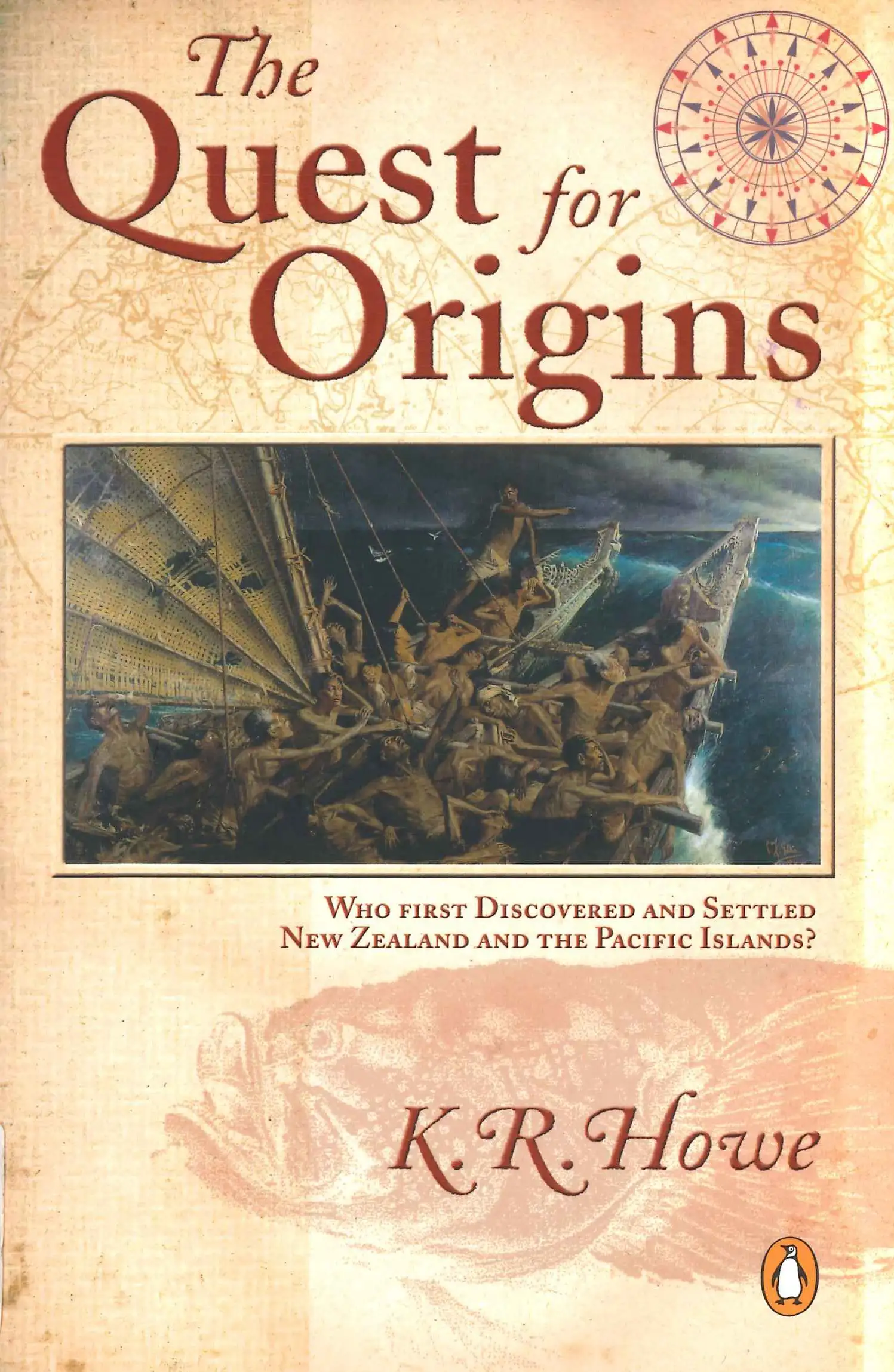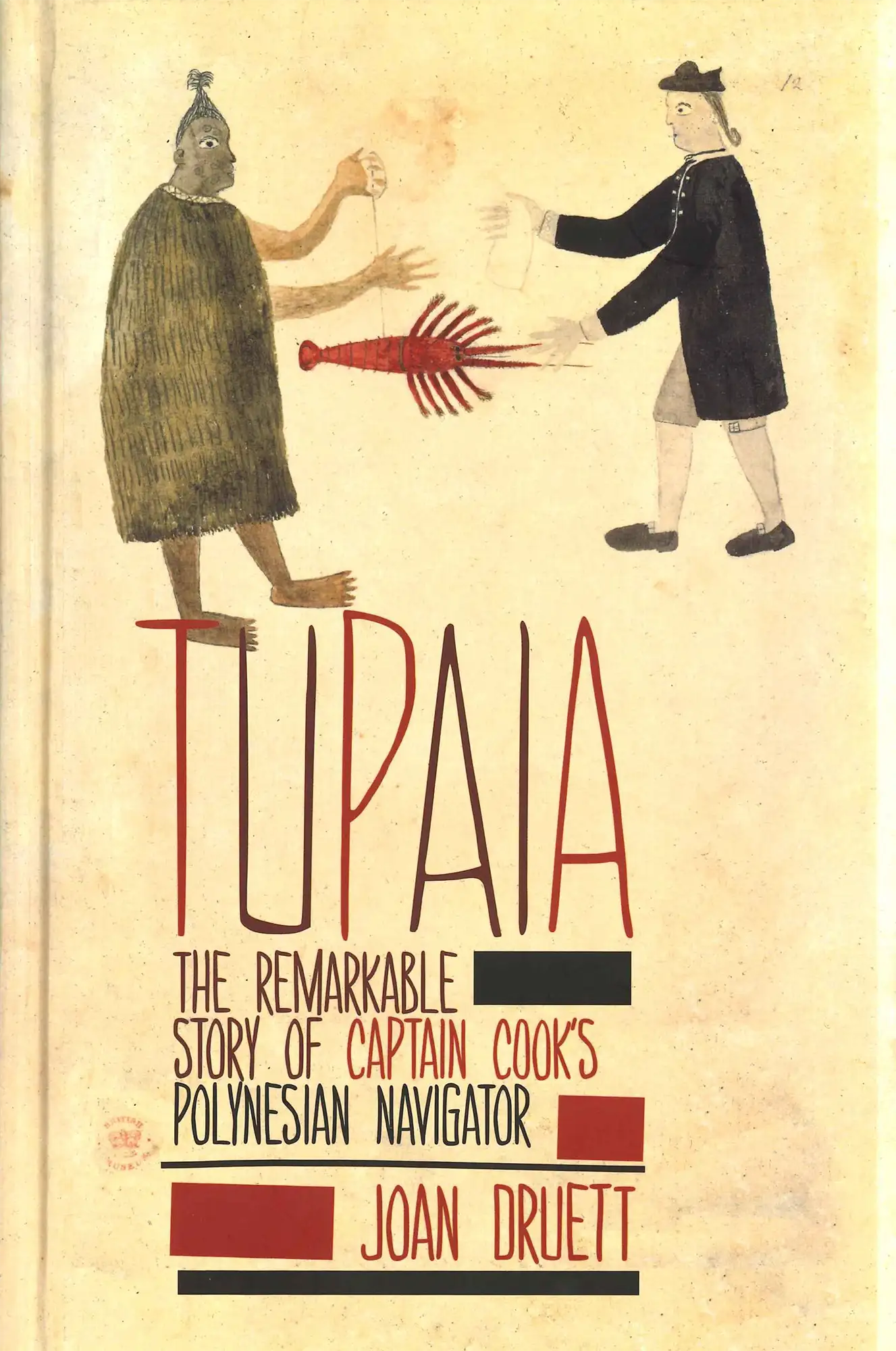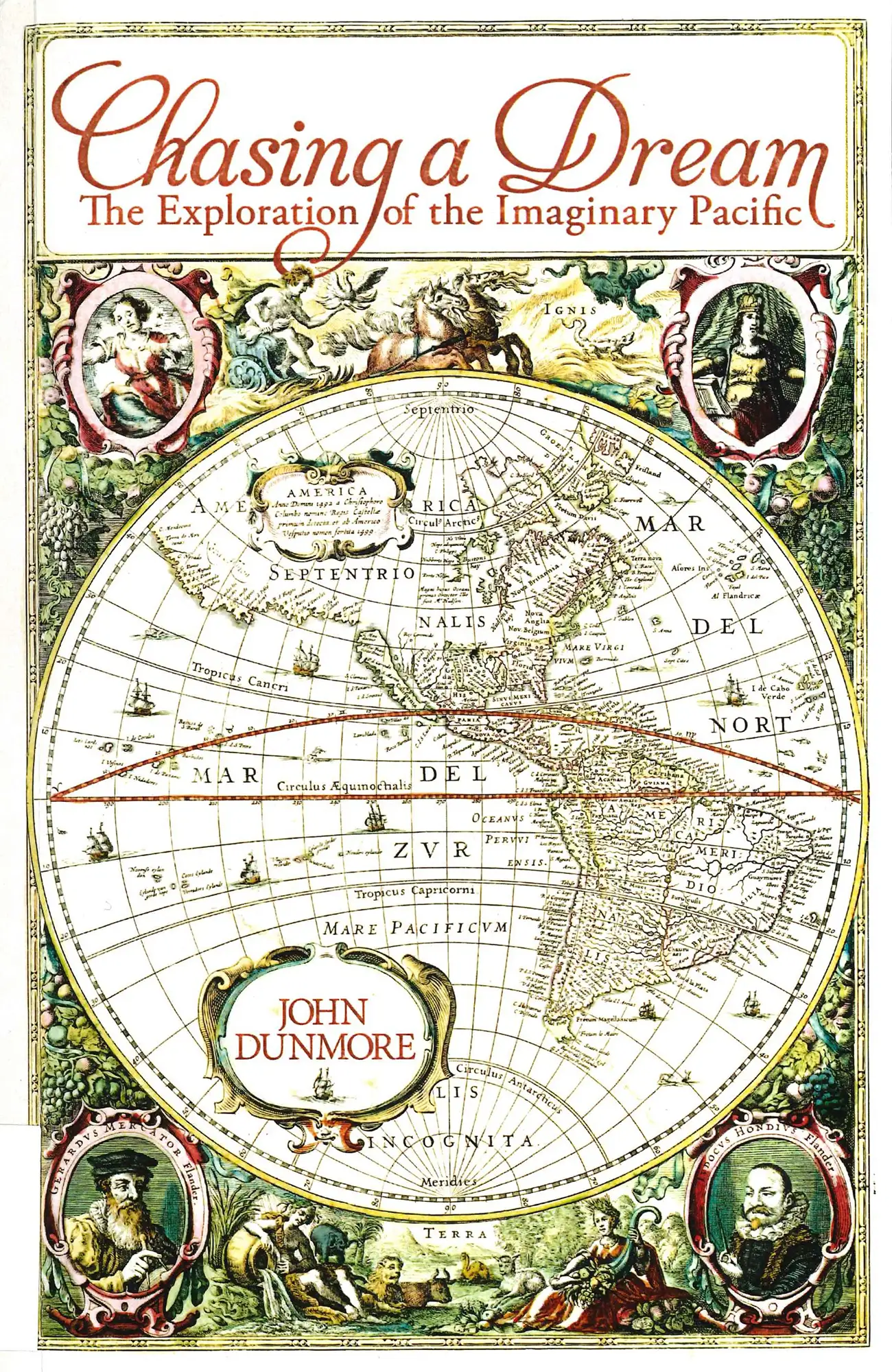Case 5
- Polynesian Voyaging, 21st century sources 1

K.R. Howe. The Quest for Origins: Who First Discovered and Settled New Zealand and the Pacific Islands? Auckland: Penguin, 2003.
This intriguing work by French-born New Zealand historian and academic John Dunmore examines how Europeans perceived the southern hemisphere from the late middle ages, by which time it was accepted that the world was a globe. What remained a mystery, however, was what lay on the ‘other side’.
Dunmore tells the story of the voyages into this great unknown, by the Chinese, the early Americans, and the Europeans, recounting the exploits of pirates and scientists, and even the impact of popular fiction on popular imagination, leading to the debunking of many myths, from the Great Southern Continent to the ideas of the ‘antipodes’ where people walked upside down.

K.R. Howe. The Quest for Origins: Who First Discovered and Settled New Zealand and the Pacific Islands? Auckland: Penguin, 2003.
Open image in new window

Joan Druett. Tupaia: The Remarkable Story of Captain Cook's Polynesian Navigator. Auckland: Random House, 2011.
Displayed here is Joan Druett’s biography of Tupaia, the Tahitian navigator who helped to ensure the success of Captain Cook’s first voyage. Tupaia sailed with Cook from Tahiti, piloted the Endeavour about the South Pacific and was the ship's translator. Being highly skilled in astronomy, navigation, and meteorology, and an expert in the geography of the Pacific, he was able to name directional stars and predict landfalls and weather throughout the voyage from Tahiti to Java.
Though, like all Polynesians, he had no previous knowledge of writing or mapmaking, Tupaia drew a chart of the Pacific that encompassed every major group in Polynesia and extended more than 4000 kilometres from the Marquesas to Rotuma and Fiji. He was also an artist – his well-known painting of Joseph Banks exchanging an item of cloth with a koura from a Māori man is depicted on the cover. Tupaia tragically died of a ship-borne illness at Batavia in 1770.

Joan Druett. Tupaia: The Remarkable Story of Captain Cook's Polynesian Navigator. Auckland: Random House, 2011.
Open image in new window

John Dunmore. Chasing a Dream: The Exploration of the Imaginary Pacific. Auckland: Upstart Press, 2016.
This intriguing work by French-born New Zealand historian and academic John Dunmore examines how Europeans perceived the southern hemisphere from the late middle ages, by which time it was accepted that the world was a globe. What remained a mystery, however, was what lay on the ‘other side’.
Dunmore tells the story of the voyages into this great unknown, by the Chinese, the early Americans, and the Europeans, recounting the exploits of pirates and scientists, and even the impact of popular fiction on popular imagination, leading to the debunking of many myths, from the Great Southern Continent to the ideas of the ‘antipodes’ where people walked upside down.

John Dunmore. Chasing a Dream: The Exploration of the Imaginary Pacific. Auckland: Upstart Press, 2016.
Open image in new window


